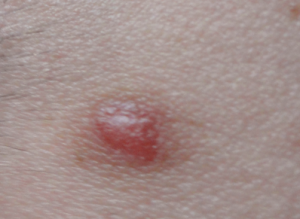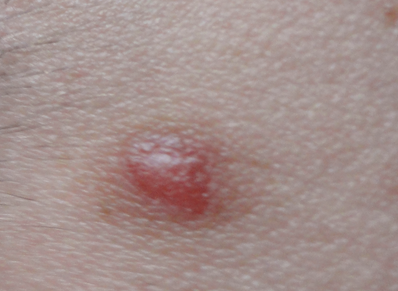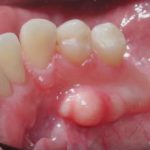Itchy moles can be due to varied normal skin disorders like dermatitis or eczema or due to irritation of nerve endings by malignant cells. An itchy mole needs to be checked by a dermatologist without any delay as it carries a high chance of being cancerous. It may be noted that some kinds of moles may develop a certain type of skin cancer called malignant melanoma. It is a fatal cancer and hence needs to be treated immediately.
What is a normal mole?
Benign or normal moles are medically referred to as melanocytic nevus. They develop due to formation of clusters of skin cells or melanocytes instead of them being spread across the skin.
Normal moles have the below listed characteristics:
- They are evenly and uniformly colored, in varied shades of pink, tan, brown, or black.
- They are oval or circular in shape and feature a regular smooth border without any edges.
- They are normally less than 6 mm diametrically in size. They can be tiny dots or even large moles.
- They may or may not feature a hair or hairs.
- They may be flat or somewhat elevated like a lump.
What are cancerous itchy moles?
Abnormal or cancerous moles are medically termed as dysplastic nevi. These moles are not just abnormal in appearance but also in structure. Such itchy moles are more susceptible to developing melanoma skin cancer.
Cancerous itchy moles have the below listed characteristics:
- The shape is not defined but irregular.
- The moles are bigger than normal moles.
- They are flat and elevated simultaneously.
- They are dark brown in color with a pinkish irregular border
- Malignant moles may develop throughout the body in big numbers. People with dysplastic nevi may feature nearly 100 such moles.
- They typically occur on the buttocks, breast, chest, scalp, or back area.
- They may form for the very first time after a person is over 20 years old.
- The moles are scaly, itchy, and painful, and may bleed.
Sudden change in the color or shape of moles is a major indicator of it being malignant. Changes in size, i.e., increase in the width or length of the mole is another sign. Other warning signs of a mole being cancerous are bleeding, changes in thickness, and edge color changes.
The ABCD guide of melanoma detection in itchy moles: This method may be used to check the skin for cancer.
- A stands for asymmetry; so check for lack of symmetry in the moles or itchy spots.
- B stands for border; so check for moles with a notched, irregular, or spreading edge.
- C stands for color; so check for blotchy patches or moles with varied colors like blue, black, white, red, and grey.
- D stands for diameter; so check if the moles are getting bigger.
Why do moles become itchy?
Itching is a feeling that is spread by tiny nerve endings present inside the layers of the skin. Allergic reactions, dermatitis, eczema, and other common skin diseases as well as insect bites and other external factors can cause itchiness. However, the nerve endings or fibers can also get irritated and activated by anomalous growth inside a melanoma or a mole. Hence, sudden itchiness in a mole without any known cause needs to be kept on watch. If a mole continues to itch for over 2 weeks, then medical attention and relevant diagnosis is recommended.
Some of the risk factors which can increase the susceptibility to developing cancerous itchy moles are listed below:
- A family history of skin cancer/melanoma
- Many previous sunburn episodes
- Excessive number of moles on the body
- Presence of sensitive skin

Treatment of itchy mole
Treatment of itchy moles involves its surgical removal from the skin. Normal non-cancerous moles may be removed for cosmetic purposes, while malignant moles need to be removed to preserve the health and prevent death.
Some of the procedures used to remove itchy moles are listed below:
- A minor surgery, wherein the surgeon uses a scalpel to remove the mole and later stitches the resultant wound. The procedure causes which can be alleviated with painkillers. The operated area may develop scars which persist for some weeks or months.
- Cryosurgery, wherein the mole tissues are frozen and destroyed with liquid nitrogen.
- Hyfrecators or electrocautery, wherein the mole is shaved off by the doctor using a scalpel. Later, an electric needle is used to destroy the melanin forming tissue. Scarring may occur.
- Laser surgery, wherein the itchy mole tissues are destroyed using a special laser. It causes minimal scarring, pain, and damage to the nearby tissues. This method cannot be used to remove moles which have some cells deep within the skin.
- Herbal treatment, wherein H-Moles, BIO-T, or other such formulas are applied on the itchy mole and then covering it with a bandage. The formula is applied for about 7 days causing the mole to dry and get destroyed.
- Acid treatment, wherein salicylic or glycolic acid peels or other medicated acids and creams are used to destroy the mole tissues. Resultant scars do not disappear easily.

